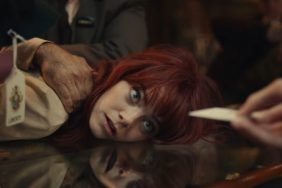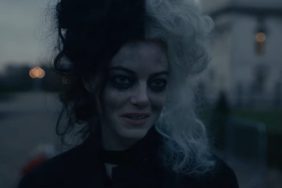
Last week, I got a lot of people riled up when I called Terrence Malick’s film The New World a “stinker”. It seemed the complaints stemmed from the fact people either disagreed or because they didn’t appreciate my disregard for the film without accompanying reason. So, when Brad emailed and suggested I revisit the film by watching both the version that was released in theaters and the longer director’s cut it was an easy decision to make. I felt if I expect you to read and respect my opinion I should read and respect yours.
Let me begin by admitting I did go a little too far calling it a stinker. In fact, I’ll go as far as to say the final forty-five minutes of The New World features some of the finest filmmaking of Malick’s career and that’s saying something. It’s just that the preceding two hours are not very good in my opinion. Here are a couple of reasons why. (And they’re not the languid pacing or over the overlapping voice overs. I actually enjoyed those aspects of the film.)

Two words kept a lot of people away from the theater when The New World came out back in 2005. Those words were “Colin” and “Farrell”. I’d like to say they were wrong as I’ve been coming around to Farrell as an actor in the last couple of years. I loved him in In Bruges, but in 2005’s The New World, as in Alexander a year earlier, he comes off like a 21st Century Irish punter terribly miscast in a period piece. His performance was like day old sushi. I wasn’t buying it. With his rock star swagger and his constantly bare chest, his presence on-screen repeatedly pulled me out of the film.
Secondly, there’s a great line at the end of The Man Who Shot Liberty Valance where the reporter tells Jimmy Stewart, “When the legend becomes fact, print the legend.” Another problem with The New World for me is that Malick wants to do both. Tell the legend and the facts, and it doesn’t make for great story telling.

In real life there was no relationship between John Smith and Pocahontas. The young native girl was only ten or eleven at the time they met and Smith spent most of his short time in Virginia hunting for food, mapping over 3,000 miles of new territory and writing journals. He was an explorer not a pedophile. Sometime later, a legend grew up around the explorer and the young daughter of Powhatan, the local chief, who helped the early settlers. In the legend they fall in love.
It’s easy to understand why filmmakers like Malick and James Cameron, whose Avatar fable is a thinly veiled version of the Pocahontas myth, are so attracted to the tale of a youthful representation of mother earth and the bold Type-A explorer who has his eyes opened by the natives. But Malick also wants to tell the very real story of Rebecca Rolfe, the one time native girl who turned to Christianity before she married John Rolfe (Christian Bale), the man who figured out how to grow and harvest fine tobacco and made the Americas a viable proposition for colonization.
For me those two stories didn’t fit together well. The John Smith/Colin Farrell opening portion just didn’t move me. On the other hand, I loved the second part of the film with Bale playing John Rolfe. His performance was everything Farrell’s was not — subdued, nuanced and believable. So was the story of these two unlikely lovers getting together and getting married. Plus, the close of the film is simply stunning.
I do understand that many other people think the two stories do work together very well. One of my favorite film critics, Ty Burr of “The Boston Globe,” named it one of the best films of 2005. In his review he argues that Malick’s representation of a love affair between Smith and Pocahontas is actually a dream. Burr wrote, “Mozart’s 23d Piano Concerto on the soundtrack alerts us to the fact that it’s a European dream — John Smith’s dream. The New World dives deep into the utopian ideal that has coursed through the veins of this country, from the Puritans through Herman Melville and Walt Whitman all the way to the hippie dream of the 1960s: that noble, ruinous vision of a city on the hill and the reinvention of the self that can be found there. Smith believes that vision and is doomed to chase it forever.”
Still he opened his review with this salvo, “Self-indulgent, gorgeous, maddening, grueling, ultimately transcendent, it’s a Terrence Malick movie all the way…” He later adds that “many people will hate it.”
I guess it’s a matter of which side of the fence you fall on. Ty Burr and others believe The New World is one of the best films of the last decade despite it’s “maddening” qualities. Others of us thought it was mostly just maddening. I’d like to know what you think and why, and whether you think Malick’s new film, The Tree of Life, will be his greatest film yet.









